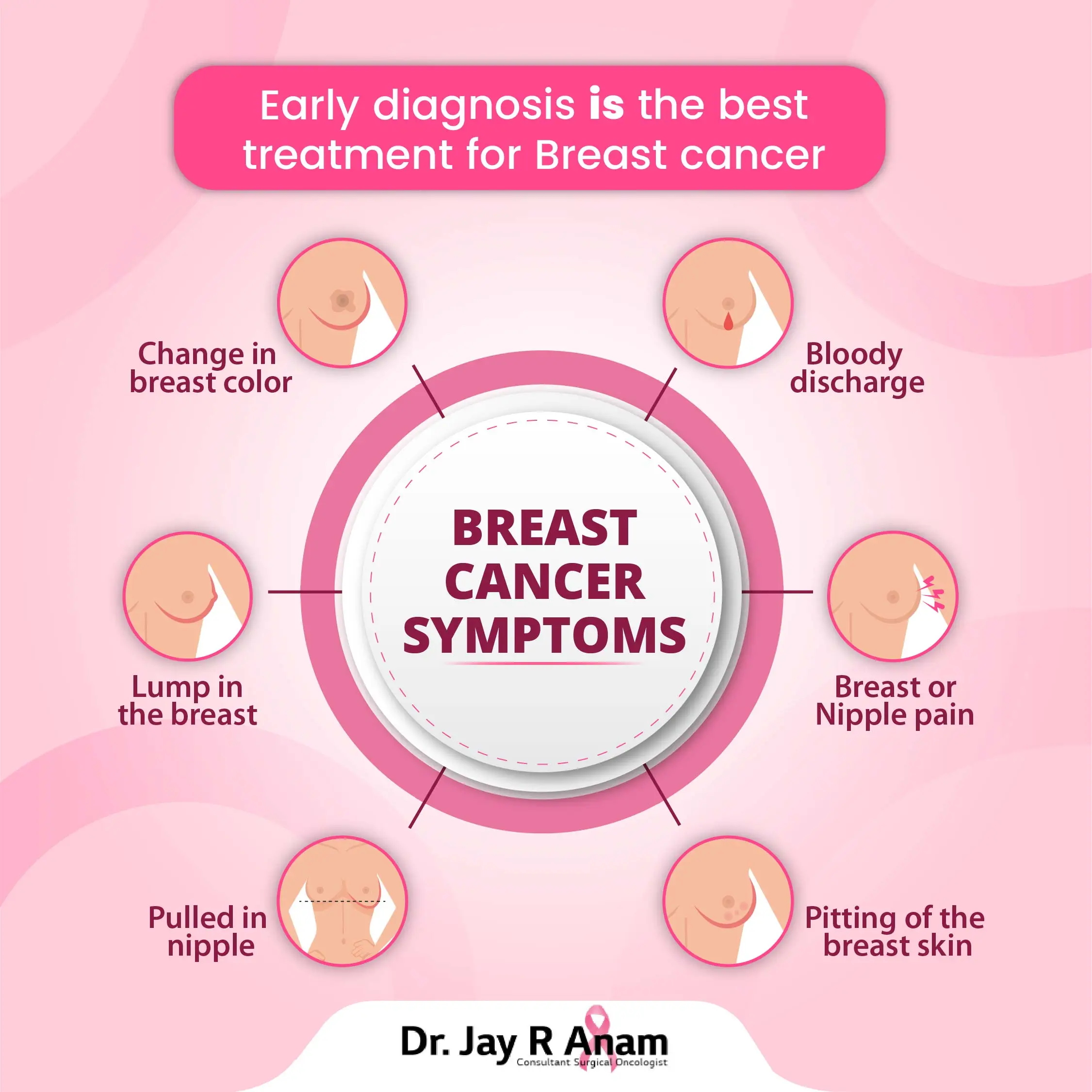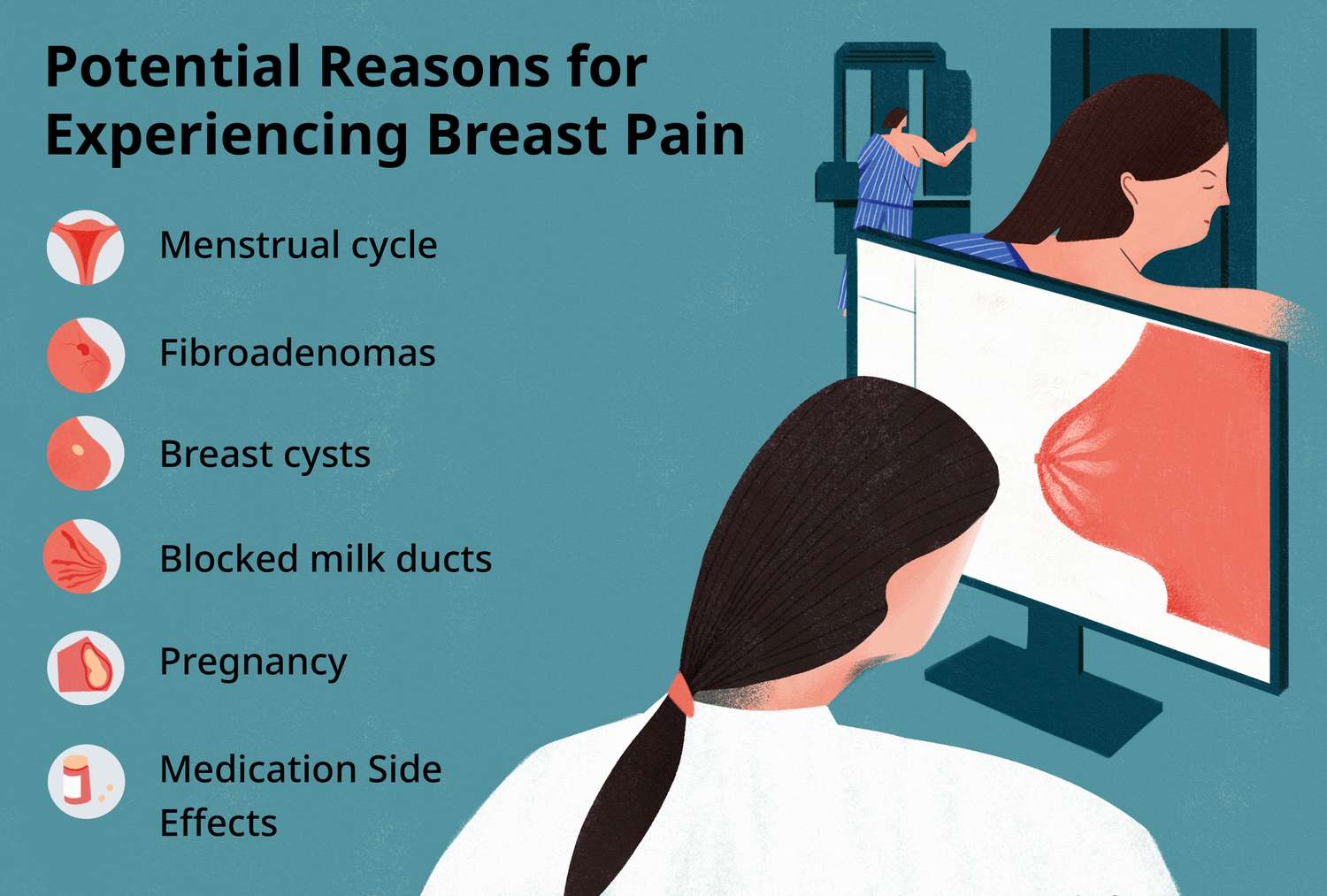Breast cancer pain can feel like a dull ache, sharp stabbing, or burning sensation. It can also cause tenderness or discomfort in the breast.
Breast cancer pain can manifest as a dull ache, sharp stabbing, or burning sensation, along with tenderness in the breast. It may also cause discomfort or pain in the armpit or shoulder. Understanding how breast cancer pain feels can help in early detection and prompt medical intervention.
Early signs of breast cancer pain are often misunderstood or ignored. It’s essential to recognize the diverse sensations associated with it, ranging from a painless lump to a tender and sore feeling. By understanding these symptoms, individuals can seek timely medical attention, potentially leading to successful treatment outcomes and a better quality of life. Undoubtedly, being aware of the varied sensations associated with breast cancer pain can be crucial for early detection and successful treatment.

Credit: drjayanam.com
Signs And Symptoms Of Breast Cancer
When it comes to breast cancer, recognizing the signs and symptoms is crucial for early detection and effective treatment. Understanding how breast cancer pain feels can help you identify potential abnormalities and seek medical attention promptly. Here are some key signs and symptoms of breast cancer:
Painless, Hard Mass With Irregular Edges
A painless, hard mass with irregular edges is more likely to be cancerous. However, it’s essential to note that breast cancers can also manifest as soft, round, tender, or even painful lumps. The texture and characteristics of the lump may vary from person to person. If you notice any unusual masses in your breasts, consult a healthcare professional for further evaluation.
Soft, Round, Tender, Or Painful Lump
While breast cancer can present as a painless, hard mass, it can also cause soft, round, tender, or painful lumps. It’s important not to dismiss these symptoms and assume that breast cancer is always painless. Any new or persistent lump should be examined by a medical professional to rule out any potential concerns.
Swelling Of All Or Part Of A Breast
Breast cancer can cause swelling in all or part of a breast. Even if you don’t detect a lump, if you notice significant swelling, it’s essential to discuss this symptom with your doctor. Swelling can be indicative of various breast conditions, including breast cancer, and requires further investigation.
Skin Dimpling
Skin dimpling, which sometimes resembles an orange peel, can be another sign of breast cancer. If you notice any changes in the texture or appearance of your breast skin, such as dimpling or puckering, it’s essential to consult a healthcare professional for proper evaluation.
Breast Or Nipple Pain
Some individuals with breast cancer may experience breast or nipple pain. However, it’s crucial to note that a lump, if present, is typically not painful. If you’re experiencing persistent breast or nipple pain, it’s advisable to seek medical attention for a thorough examination and to rule out any potential concerns.
Remember, early detection plays a crucial role in the successful treatment of breast cancer. If you experience any of these signs or symptoms, it’s important to consult a healthcare professional promptly for an accurate diagnosis and appropriate treatment.
Early Detection Of Breast Cancer
Early detection of breast cancer is crucial to improving treatment outcomes and increasing survival rates. Understanding the signs and symptoms, as well as the importance of routine screenings, can significantly impact the diagnosis and management of breast cancer.
Routine Screening Mammogram
A routine screening mammogram serves as an essential tool for detecting breast cancer in its early stages. This imaging test can identify abnormalities in the breast tissue, such as lumps or masses, that may not be palpable during a physical examination. Mammograms play a vital role in the early detection of breast cancer, allowing for prompt medical intervention and improved prognosis.
No Apparent Signs Of Breast Cancer
At the time of diagnosis, most women don’t exhibit any apparent signs or symptoms of breast cancer. Women must undergo routine screenings, such as mammograms, even in the absence of noticeable changes in the breasts. Early detection through regular screenings can lead to timely medical interventions, potentially preventing the progression of breast cancer to advanced stages.
Symptoms Of Early Stage Breast Cancer
Recognizing the symptoms of early-stage breast cancer is crucial for timely diagnosis and treatment. Understanding the signs that may indicate the presence of breast cancer can lead to early intervention, potentially improving the prognosis. Early detection can significantly increase the chances of successful treatment and a positive outcome.
Thickening Or Swelling Of Part Of The Breast
One of the key symptoms of early-stage breast cancer is the presence of thickening or swelling in a specific area of the breast.
Irritation Or Dimpling Of Breast Skin
Another indication of early-stage breast cancer is the presence of irritation or dimpling on the skin of the breast.
Redness Or Flaky Skin In The Nipple Area Or The Breast
Redness or flaky skin in the nipple area or anywhere on the breast can be a symptom of early-stage breast cancer and should be assessed by a medical professional.
Pulling In Of The Nipple Or Pain In The Nipple Area
The sensation of pulling in of the nipple or experiencing pain in the nipple area can signal a potential concern and should not be ignored.
:max_bytes(150000):strip_icc()/VWH-JakeShi-PotentialReasonsforExperiencingBreastPain-Standard-c73f2202af3146309c0726248ffba38d.jpg)
Credit: www.verywellhealth.com
Breast Cancer Pain Vs. Pulled Muscle
Breast cancer pain is unlikely to feel like a pulled muscle. Breast cancer can cause a painless lump, hard mass, or swelling in the breast with irregular edges, while pulled muscles result in localized pain and tenderness. It’s important to consult a healthcare professional for an accurate diagnosis.
Breast cancer rarely feels like a pulled muscle When it comes to understanding and identifying breast cancer pain, it is crucial to differentiate it from pain caused by a pulled muscle. While breast pain can be worrisome and alarming, it is essential to know that breast cancer rarely feels like a pulled muscle. According to experts, when breast cancers start developing, women are usually symptom-free. Therefore, it is crucial not to confuse the pain associated with a pulled muscle with potential signs of breast cancer.
Importance Of Not Ignoring Signs Or Symptoms
Women need to pay close attention to any signs or symptoms they experience and not disregard them, especially when it comes to breast health. Breast cancer remains one of the most prevalent types of cancer affecting women worldwide. Ignoring the potential signs of breast cancer can lead to delayed diagnosis, which can significantly impact the effectiveness of treatment and overall prognosis.
Signs and symptoms of breast cancer may vary from person to person, but it is important to be aware of the most common indicators. These may include a painless lump or thickening in the breast, skin changes such as dimpling or redness, nipple abnormalities like inversion or discharge, and persistent breast pain. It is crucial to remember that not all breast pain indicates cancer, but any persistent or unusual pain should be evaluated by a healthcare professional to rule out any potential concerns.
Regular breast self-exams, clinical breast exams, and mammograms are essential for early detection and diagnosis of breast cancer. By being proactive and attentive to any changes in the breast, women can ensure they receive timely medical attention if needed, leading to better treatment outcomes.
In conclusion, understanding the difference between breast cancer pain and a pulled muscle is crucial for women’s health. While breast cancer rarely feels like a pulled muscle, it is essential to remain vigilant and not ignore any signs or symptoms. Early detection plays a vital role in successfully treating breast cancer, emphasizing the importance of regular screenings and seeking medical advice whenever there are concerns.
By staying informed and proactive, women can prioritize their breast health and potentially save lives.
Types Of Breast Cancer Lumps
Breast cancer pain can vary in sensation, ranging from a painless, hard lump with irregular edges to a soft, round, tender, or even painful mass. Other symptoms may include swelling of the breast, skin dimpling resembling an orange peel, and nipple or breast pain.
Regular screenings can help to detect these signs early.
Distinct Lumps Or Bumps
One of the types of breast cancer lumps that women may experience is a distinct lump or bump. These lumps are usually hard and have irregular edges, making them more likely to be cancerous. It’s important to note that not all breast cancer lumps are painful. In fact, some women may not even feel the lump themselves and it may be detected through routine screening mammograms. So, if you notice any unusual lumps or bumps in your breast, it’s crucial to seek medical attention for further evaluation.
Lumps That Feel Like A Shelf Beneath The Skin
Another type of breast cancer lump that women may encounter is one that feels like a shelf beneath the skin. These lumps are often described as thick, dense, and extending horizontally across the breast. They may feel different from the surrounding breast tissue and can be a cause for concern. If you notice a lump that feels like a shelf beneath your skin, it’s essential to consult with a healthcare professional to determine the cause.

Credit: www.healthline.com
Frequently Asked Questions For What Does Breast Cancer Pain Feel Like
What Kind Of Breast Pain Indicates Cancer?
Breast pain indicating cancer includes a painless, hard mass. Breast cancers can also be soft, round, tender, or painful. Other symptoms may include swelling, skin dimpling, or a painless lump. Most breast cancers are initially painless, and lumps are often detected through screening.
What Does Breast Cancer Feel Like In The Beginning?
In the beginning, breast cancer may feel like a painless lump, which may not always be noticeable. Additionally, breast cancers can also feel soft, round, tender, or painful. However, most women don’t show apparent signs at the time of diagnosis.
Other symptoms may include swelling, skin dimpling, or breast pain.
What Are The Symptoms Of Early Stage Breast Cancer Pain?
Early stage breast cancer pain may present as thickening or swelling in the breast, irritation or dimpling of the breast skin, redness or flaky skin in the nipple area or breast, and pulling in or pain in the nipple area.
Conclusion
Breast cancer pain can be varied, ranging from a painless, hard lump to a soft, tender mass. Other symptoms may include swelling of the breast, skin dimpling, and nipple abnormalities. It’s important to note that breast cancer does not always cause pain, and routine screenings are vital for early detection.
If you experience any changes in your breasts, it’s crucial to consult with a healthcare professional for further evaluation. Your health and well-being should always be a top priority.
